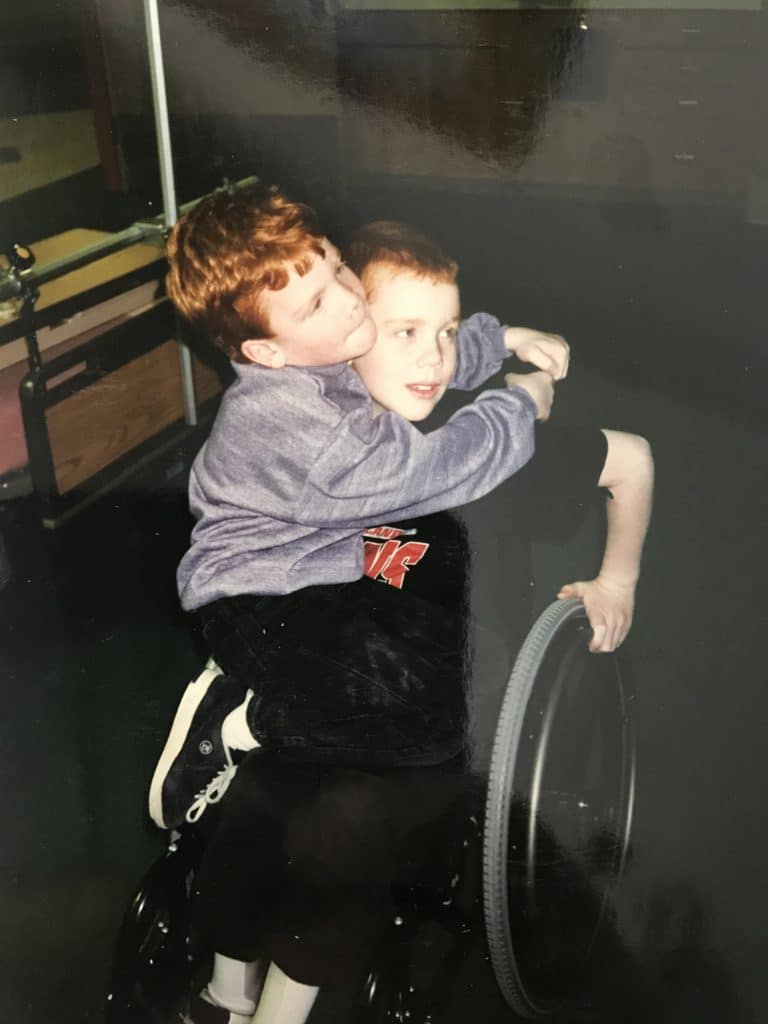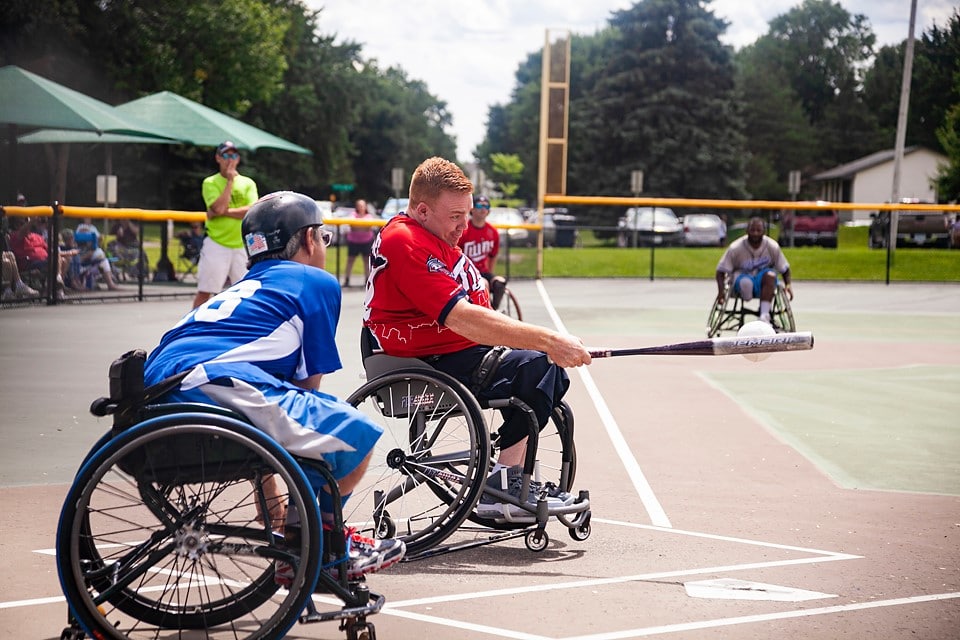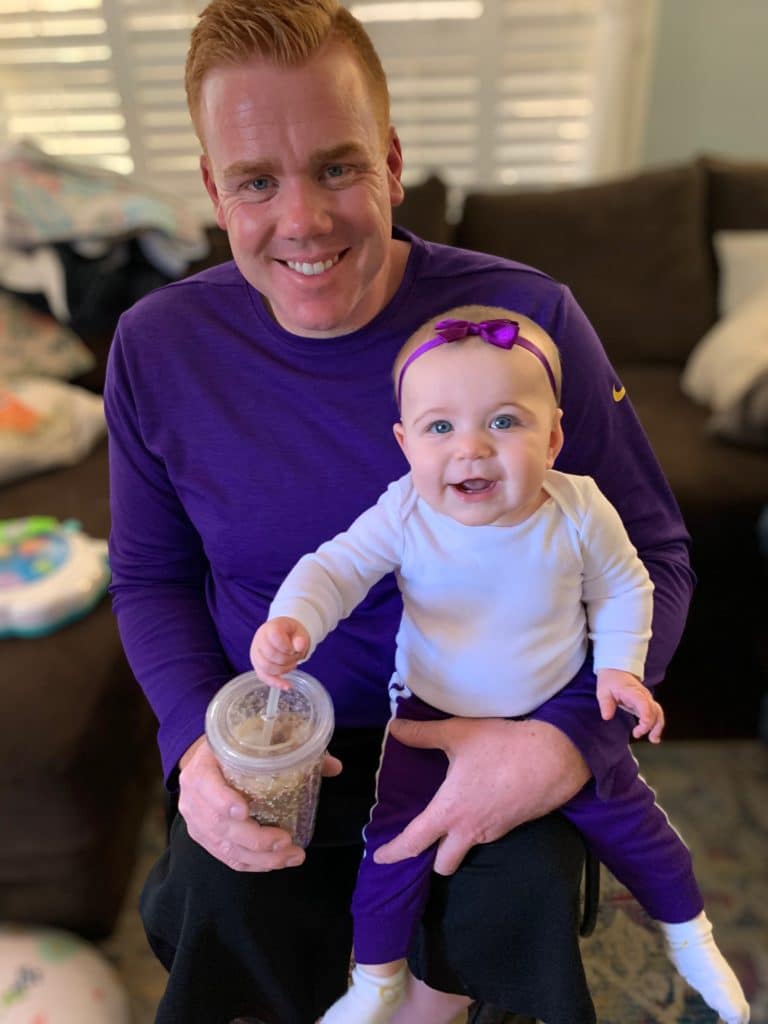My name is Brendan, and I’m a 33-year-old adult with spina bifida living in Texas with my wife and 9-month-old daughter. I have the unique privilege of working as a Patient Advocate for 180 Medical. Part of my job involves supporting and helping out kids with spina bifida and their families and caregivers. I know firsthand what it can be like for others growing up with spina bifida, and I’d like to provide a sense of what it was like for me.
My Childhood with Spina Bifida
I was raised in the ice and snow of Minnesota as the oldest of three children. Early on, my parents made it very clear that they would never bubblewrap me or my siblings. In other words, while they cared deeply for us and constantly watched over us, they made sure I would be able to experience all the things that most kids do, even though I was born with spina bifida. Cuts, scrapes, sports, punishment, playing, friendship, heartache, and fun vacations are just a few of the things that come to mind when thinking about my childhood experiences.

I remember my mom always telling us: “One day, we won’t be around to do this for you. That’s why you must learn how to do this yourself.” This usually referred to daily chores, such as doing the dishes, weekly laundry, and cleaning our bedrooms. While some of those duties took longer for me than for my siblings, it was an incredibly valuable lesson for me.
Obviously, we all live with our own set of circumstances. However, when I look back, I always appreciate that my parents really did their best to let me be a kid — not just a kid with a disability.
What Is Growing Up with Spina Bifida Like?
People always ask me what it’s like to grow up with a disability. Two words that fit best would be unique and challenging.
Every individual’s experience of living and growing up with spina bifida is unique to them, just like every case of spina bifida is different and unique. For example, I didn’t need a shunt at birth, while many children born with spina bifida rely on them. A shunt helps drain fluid from the brain and protects it.
On the other hand, while some of my friends with spina bifida walk freely or use crutches, I primarily use a wheelchair. However, that hasn’t stopped me from leading a very active life, including sports, scuba diving, and more.

When you live with a disability, your life can be more challenging compared to most of those around you. From the doctor visits, occasional surgeries, and constant mobility issues, each day gives us a unique opportunity to learn how to best navigate the world ahead. That navigation almost always requires us to be very creative. Often, our lives don’t follow a straightforward path. However, just because our life might take a small “detour” does not mean we cannot reach our end goal.
Getting Proactive and Creative
People impacted by spina bifida, whether children, adults, families, or caregivers, face a wide variety of new experiences and challenges. As children with spina bifida, we all yearn for the feeling of “being normal.” However, later in life, we may realize that our unique set of circumstances ultimately helped mold us into better people.
For instance, living with spina bifida has prompted me to become more proactive. Over the years, I’ve worked to find ways to help out the spina bifida community and form new relationships with others. I have worked with young athletes living with spina bifida, spoken to groups, and stayed active with my local chapter of the Spina Bifida Association.
Additionally, our level of creativity regarding the issues we face in daily life can directly impact our level of independence. One aspect of this involves personal care.
As a person with a disability, I have more things to do regularly, such as self-catheterization, a bowel program, checking for skin breakdown, etc. My wife, daughter, parents, siblings, and friends don’t have to think about these things. However, all of these things help ensure I can continue to have a high quality of life.
Is it fair? Certainly not. Is it easy? Sometimes no. Is it necessary? Without question. If we fail to face these challenges head-on, we sell ourselves short. Being persistent in our day-to-day routine is paramount. Ultimately, the only person who knows if we’re being accountable is ourselves. We always answer to the person looking back at us in the mirror. And the only way to do that positively is to be persistent.

Facing Challenges Head-On with Spina Bifida
Being persistent takes a lot of energy sometimes. Some days can be tougher than others. However, we always have an option to find a creative solution, and tomorrow is always a new day.
Ultimately, growing up with spina bifida helped me learn to make each day count, whether learning how to do something for the first time or learning a better way of doing a normal task. We can always find new ways to face our daily challenges. Doing this for yourself might make an easier path for the next person going through the same situation.
If you need help finding the right catheters or ostomy products, 180 Medical specialists are here for you. We offer free samples, free shipping, and so much more. Most of all, I love that our company is all about compassion. We’re here to listen and be supportive as we find product solutions to fit your unique needs and improve your quality of life.
Also, if you have specific questions or need more help with living with spina bifida, please feel free to reach out through our website’s contact options. Just ask to be connected to me, and I’ll be glad to help however I can.
